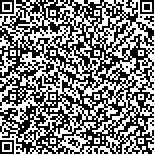| 引用本文: | 孙 辉,汪 岷,汪 俭,宋 雪,邵红兵,甄 毓.养殖活动对超微型浮游生物分布影响的研究.海洋与湖沼,2014,45(6):1272-1279. |
| |
|
| |
|
|
| 本文已被:浏览 2654次 下载 2379次 |

码上扫一扫! |
|
|
| 养殖活动对超微型浮游生物分布影响的研究 |
|
孙 辉,汪 岷,汪 俭,宋 雪,邵红兵,甄 毓
|
|
中国海洋大学 海洋生物遗传学与基因资源利用教育部重点实验室 青岛,中国海洋大学 海洋生物遗传学与基因资源利用教育部重点实验室 青岛,中国海洋大学 海洋生物遗传学与基因资源利用教育部重点实验室 青岛,中国海洋大学 海洋生物遗传学与基因资源利用教育部重点实验室 青岛,中国海洋大学 海洋生物遗传学与基因资源利用教育部重点实验室 青岛,中国海洋大学 环境科学与工程学院 青岛
|
|
| 摘要: |
| 利用流式细胞仪对河北省扇贝养殖区微微型浮游植物、异养细菌、浮游病毒4季的丰度分布特征进行了研究, 分析了三者与环境因子的相关性, 并与渤海、北黄海非养殖区的超微型浮游生物丰度的分布特征进行对比。结果显示: 在养殖区海域, 聚球藻丰度在9.00×102 - 7.07×105 cell/mL之间, 峰值出现在秋季, 且与其他季节差异显著(P <0.01)。微微型真核藻类丰度在5.80×102 - 3.23×105 cell/mL之间, 夏季赤潮暴发期间, 丰度达到3.23×105 cell/mL, 显著高于其他季节(P <0.01)。异养细菌丰度在3.10×105 - 3.79×106 cell/mL之间, 峰值出现在秋季, 夏、秋季丰度显著高于春、冬季(P <0.01)。浮游病毒丰度在2.50×105 - 2.17×106 cell/mL之间, 峰值出现在秋季, 但无显著性季节差异(P >0.05)。通过主成分分析发现, 聚球藻、微微型真核藻类、异养细菌和浮游病毒的丰度在不同季节受到不同环境因子的影响。在春、冬季, 温度是主要影响因素; 而在夏、秋季, 主要受到营养盐的影响。养殖区与非养殖区超微型浮游生物主成分4季均有显著差异, 养殖区异养细菌4季均是超微型浮游生物的主成分, 而非养殖区超微型浮游生物的主成分4季均是微微型浮游植物, 结果表明养殖活动显著影响了养殖区超微型浮游生物的群落结构和功能。 |
| 关键词: 扇贝养殖区 聚球藻 微微型真核浮游藻类 异养细菌 浮游病毒 |
| DOI:10.11693/hyhz20140100038 |
| 分类号: |
| 基金项目:国家海洋公益性行业科研专项经费项目资助, 201205031 号; 国家自然科学基金项目资助, 41076088 号 |
附件 |
|
| EFFECT OF AQUACULTURE ACTIVITIES ON DISTRIBUTION OF ULTRAPLANKTON |
|
sun hui,wang min,wang jian,song xue,shao hong bin and zhen yu
|
|
Key Laboratory of Marine Genetics and Gene Resource Exploitation of Ministry of Education, Ocean University of China,Key Laboratory of Marine Genetics and Gene Resource Exploitation of Ministry of Education, Ocean University of China,Key Laboratory of Marine Genetics and Gene Resource Exploitation of Ministry of Education, Ocean University of China,Key Laboratory of Marine Genetics and Gene Resource Exploitation of Ministry of Education, Ocean University of China,Key Laboratory of Marine Genetics and Gene Resource Exploitation of Ministry of Education, Ocean University of China,College of Environmental Science and Engineering, Ocean University of China
|
| Abstract: |
| The abundance and distribution of phytoplankton, heterotrophic bacteria, and virioplankton in scallop cultivation area in four seasons were investigated in flow cytometry, and the correlations with environmental factors was analyzed. The abundance and distribution of ultraplankton in no-cultured cultured and no-cultured areas of the Bohai Sea and the Yellow Sea were compared. In cultured area, the abundance of Synechococcus ranged from 9.00×102 to 7.07×105 cell/mL, maximum in autumn obviously different from other seasons. The abundance of Picoeukaryote ranged from 5.80×102 to 3.23×105 cell/mL, maximum in summer over those of other seasons. The abundance of heterotrophic bacteria ranged from 3.10×105 to 3.79×106 cell/mL, higher in summer and autumn and lower in spring and winter. The abundance of virioplankton ranged from 2.50×105 to 2.17×106 cell/mL with no obvious difference among four seasons. PCA analysis revealed that the abundances of picophytoplankton, heterotrophic bacteria, and virioplankton were affected seasonally by different environment factors. In spring and summer, they depended on temperature; in autumn and winter, on nutrients. In addition, obvious difference was found in principal component of micro-plankton between cultured area and no-cultured area. The principal component of ultraplankton was heterotrophic bacteria in cultured area, but phytoplankton in non-cultured area. Therefore, aquaculture activities affect significantly the community structure and function of ultraplankton in culture zones. |
| Key words: scallop cultivation area Synechococcus Picoeukaryote heterotrophic bacteria virioplankton |
|
|
|
|
|
